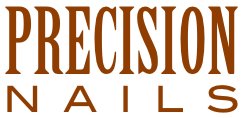Whether your state requires continuing education or not, any discussion about it presumes that the basic education provided in beauty schools produces licensed manicurists capable of working competently and safely. If this were true, why do so many licensed manicurists lack basic skills and fail to follow heath and safety regulations? And if it's not true, what will a few hours of continuing education accomplish after hundreds of hours spent in beauty school? California, Oregon and Washington do not currently require continuing education, but in states that do like Ohio and Texas, are manicurists more informed and consumers safer?
Our careers as nail professionals begin with beauty school, where we can spend as few as 200 hours (Ohio) or as many as 600 hours (Oregon, Texas and Washington) to qualify for the licensing examination. These variations in time confirm the fundamental problem with time-based curriculums: the quantity of time is valued more than the quality of the instruction and the competency of the student. To suggest that beauty school students spend all their time in technical instruction and/or providing services (practical operation) defies reality. Beauty schools rarely devote more than 90 minutes to direct instruction during the day, nor can they possibly supply enough clients to keep students busy.
Some states have considered increasing the hours required in hopes of improving compliance and consumer safety. For example, California’s Board of Barbering and Cosmetology recently proposed an increase from 400 to 500 hours. As an expert educator, licensed salon owner and manicurist, I strongly opposed this proposal. Requiring more hours would likely discourage individuals from becoming students, produce a significant financial burden on those who do and unnecessarily delay their entry into this profession, without ANY guarantee of increased competence or consumer safety. Given the time already wasted in existing curriculums, why would school instructors need more time? Students could learn how to properly disinfect equipment, including what can and cannot be disinfected, in 60 minutes or less. The failure of licensees to follow health and safety regulations after they leave school suggests that either they didn’t learn what to do or weren’t convinced that it wasn’t optional.
As long as "nail care" is considered distinct from "health and safety,” students will dismiss the latter as unimportant when in fact it should inform everything they do. These are NOT separate subjects; beauty schools should teach nail care procedures based on acceptable health and safety practices. To be very simplistic, "nail care" is what licensed manicurists do, and "health and safety" is how it must be done. A well-designed manicuring curriculum must be based on scientifically accurate information and promote best practices, not perpetuate misinformation and low standards. I consider the competent performance of the following tasks fundamental to manicuring, regardless of "trends:"
- shaping the nails (trimming, filing and buffing);
- conditioning the skin surrounding the nail (eponychium, not "cuticle");
- conditioning the skin of the hands and feet (exfoliating, moisturizing and massaging);
- smoothing (not removing) calluses;
- applying and removing polish;
- applying and removing artificial nails, including natural nail repairs;
- and most important, doing all of the above in a manner that protects the health and safety of consumers and the licensee.
In my experience as an expert witness, I’ve observed that many consumer complaints involve pedicures, but another common problem is the improper use of drills/electric files. In California, using a drill is not prohibited, but it’s not included in the manicuring curriculum or licensing examination either. If it were included, the thought of students practicing on clients without the proper training or supervision makes me wince! Given how many complaints arise from drill damage, this may be one of those instances where special certification through continuing education should be required, like in Colorado.
The exceptionally poor work done by some manicurists undermines our professionalism and poses a serious risk to consumers.The average consumer mistakenly believes that a manicuring license proves technical competence. Why do states allow incompetent individuals to obtain licenses? Has the focus on “safety” obscured the benefits of requiring licensees to demonstrate quality work? If we continue to accept mediocrity as our standard of practice, we will continue to produce an incompetent workforce incapable of meeting the demands and expectations of consumers.
By Jaime Schrabeck, Ph.D.




